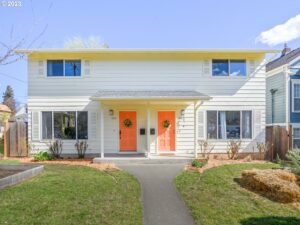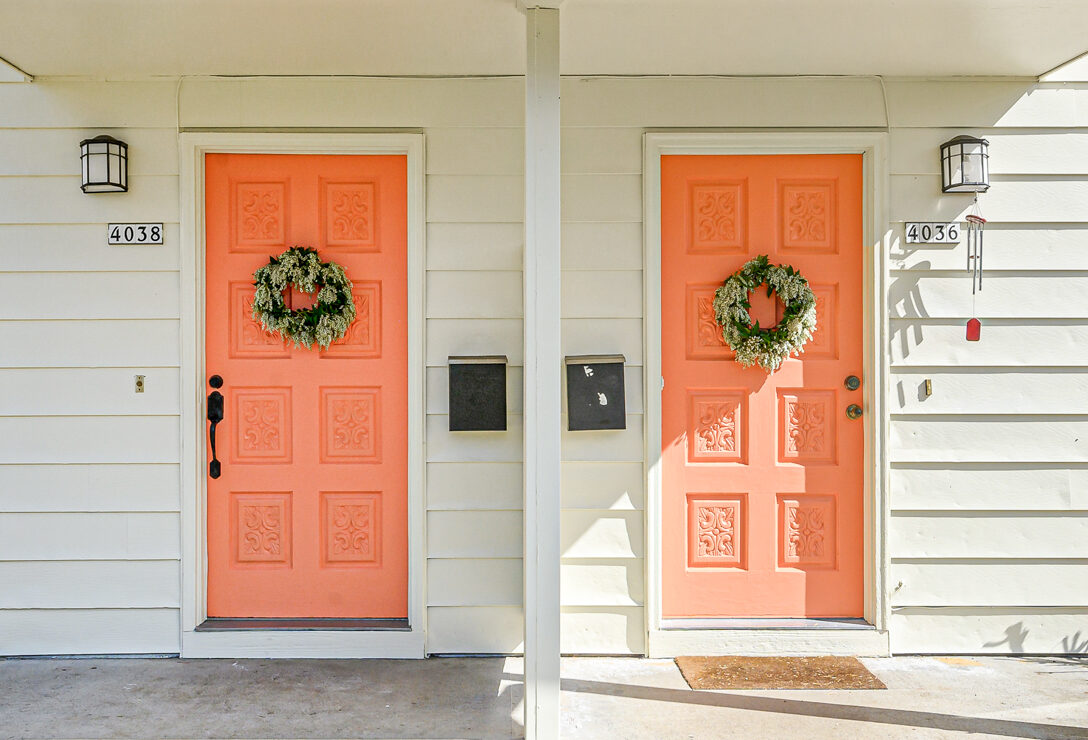By Sorcha Porter: Licensed Assistant to Shannon Dooley
In a time where interest rates are high the possibility of homeownership might feel like it’s becoming out of reach for many buyers. For every point interest rates go up nationally 5million people lose their ability to qualify for home ownership. That combined with financial experts like Dave Ramsay who encourage people to have 20% down when they buy makes the goal of home ownership feel extremely out of reach. Especially in places like Portland Oregon where the average home sells for $566K that downpayment combined with monthly payment makes homeownership feel super inaccessible.
But there’s another way to get on the property ladder that many first time buyers don’t think of. It’s a way that anyone who’s built an income from real estate will tell you either they did, or wish they did starting out. It sets you up for SO much success and can cost LESS than buying a standard single family home. To achieve this you can use the FHA 3.5% down loan to purchase a Duplex.
The main advantages to owning a multi unit property are the following;
- Leverage rental income to offset or pay your monthly mortgage.
- Use the income from the rental to increase your buying power, lenders can count 75% of market rate rental towards your income if the property is vacant and 75% of the actual rent if the unit is occupied towards your monthly income to help you qualify for more. Meaning you could potentially get into a better home, or neighborhood.
- When your tenant is paying some or all of your mortgage you can save SO much money for emergencies, life goals and even future properties!
To break this down I connected with one of Living Room’s Partner lenders James Adair at Neo Home loans to give us the numbers on a property recently sold by Kim Parmon so you can actually see how this pencils out.
“Using the FHA loan program is a fantastic way to access multi unit properties IF you plan to owner occupy.
With both mortgage interest rates AND home prices rising, the cost to buy and hold real estate has simply never been higher, and it is pressuring the house hold incomes of many families. Buying a property that has more than one living space means you can offset your mortgage payments with the rental income on the other unit.
The example case study we are using to illustrate this is a recent sale on N Albina that was listed for $699,900.00.

The most common mortgage strategy for multi unit is the FHA loan program. The FHA simply offers the most LEVERAGE in that you are allowed to buy a 2-4 unit property with as little as 3.5% down payment.
Non-FHA insured alternatives usually require much more down, but the FHA really shines here. Not only can you access some income offsetting monthly mortgage costs with FHA –but you can also use the NEW RENTAL income to help you qualify for the mortgage. This means that you’re buying power is amplified when you get a multi unit property like this.
In our example the rented unit was producing approx. $2300 per month. This translates to $20,700.00 of additional qualifying income for the financing. More simply put- this particular property adds $140,000.00 of NEW BUYING POWER.
As this property is listed for $699k – if your max purchase price on a NORMAL SINGLE FAMILY property was $560k – you could conceivably qualify for this purchase price, due to the added qualifying income.
We estimate that this property with a minimum 3.5% down payment would translate to a total PITI+MI payment of approximately $5,200 per month. When you adjust for the $2300 of income, the NET cost to live here becomes $2,900 per month. If you wanted to land at a monthly mortgage of $2900, you’d end up capping out at a purchase price of about $355k (with the same down payment dollar amount).
The buying power is only part of the story- the ECONOMIC LIFESTYLE POWER is equivalent to the difference between $699,900 and $355,000 – that’s $344,500 of magic real estate bucks that the other unit creates for the buyer. “
In conclusion…
If you’re looking at buying a home in 2023, and you’re daunted by the interest rates, and rising costs this is a way for you to get on the property ladder, and once you’re on it it’s so much easier to climb and leverage it to your advantage. If you’d like to learn more about duplex purchases, and or buying an income property we’d love to talk to you. Just reach out to us here! And be sure to connect with a lender, James is licensed in 48 states so odds are good he can help you wherever you are!


